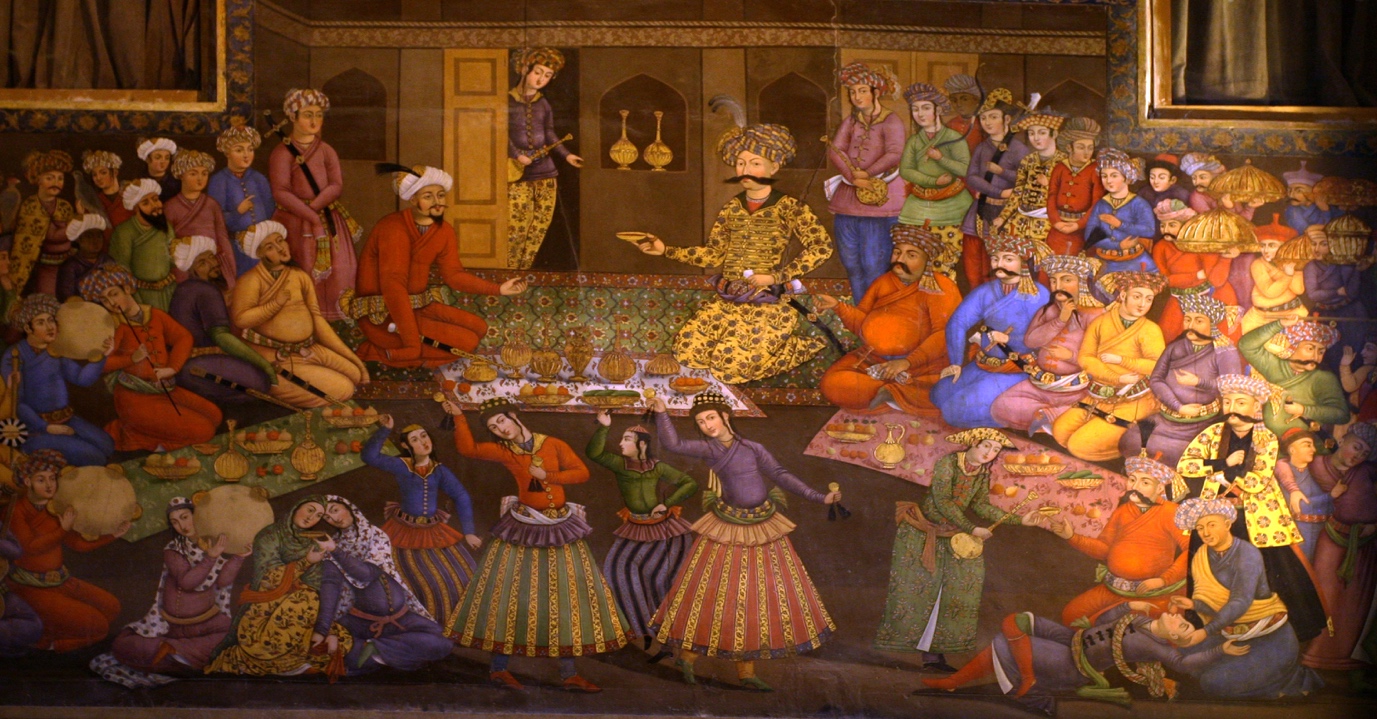HISTORY OF INDO-IRANIAN COMMERCIAL RELATIONS

Since antiquity merchants have used both caravan and maritime routes to transport commodities between India and Persia. During the early modern era, as European companies became an important presence in the arena of Indian Ocean trade, an increased percentage of the total trade between the regions was conducted via the Indian ports of Surat, Thatta, and Lahori Bandar and the Persian ports of Hormuz, Bandar-e ʿAbbās (Gombroon), and, from the beginning of the 19th century, Bušehr. During this period, however, the caravan trade, largely directed through Kandahar, still maintained an important role in Indo-Persian commercial relations. This suggests that the relationship between these modes of transport may be more accurately characterized as complementary than as competitive. In 1615, the Englishmen Richard Steel and John Crowther noted that the war over Hormuz between the Safavids and the Portuguese had driven that portion of India’s trade with Persia which had previously been carried out through maritime routes to the caravan routes. This resulted in an increase in the size of the caravans passing through Kandahar from 3,000 to 12-14,000 camels. Adding to the importance of the caravan routes during the early modern era was the increasing dominance of the Europeans over maritime routes, which correspondingly motivated indigenous merchants to turn to the caravan routes for their transportation needs. This encouraged the Mughal and Safavid rulers to intensify their efforts to promote, protect, and tax the trade caravans Kandahar’s strategic location on the Indo-Persian frontier, together with its value as a commercial entrepôt, made it a highly coveted city for the competing Mughals and Safavids. The rulers of both dynasties took every opportunity to capture Kandahar, which changed hands between the two on a dozen occasions (Islam, p. 14). While maritime disturbances were known to have driven merchants to use the caravan routes, during the periods of Mughal-Safavid rivalry over Kandahar, merchants would temporarily favor the more predictable maritime routes Indo-Persian commercial relations were mediated by merchants originating from India, Persia, Afghanistan, and, from the beginning of the sixteenth century, Europe. Ethnic minority groups living in Persia, such as Armenians and Jews, also played an important role in Persia’s international commercial relations. During the early modern era, however, the most important participants in Indo-Persian commercial relations were communities of Indian merchant-moneylenders. They were agents of a number of heavily capitalized family firms centered in Multan, an important commercial center in northwestern India. Indian merchant diaspora communities were present in Persia from the mid-16th to the 19th century, a period characterized by a general growth in the volume of Persia’s international trade.
In 1623, the Russian merchant F. A. Kotov recorded the presence of a Multani diaspora community in Isfahan, and in 1637 Adam Olearius reported that this community consisted of some 12,000 merchants. In the 1660s, Jean de Thévenot estimated the number of Indian merchants in Isfahan to have grown to 15,000 . In the 1660s, Jean Chardin reported that the total number of “Multani Indians” in Safavid territory exceeded 20,000. In addition to Isfahan, Indian communities established themselves in the Persian Gulf port cities of Bandar-e ʿAbbās and Bušehr, a number of Caspian Sea ports in the provinces of Širvān, Gilān, and Māzandarān, as well as in virtually all of Persia’s important inland commercial centers. The economic activities of these merchants focused on moneylending and large-scale, trans-regional trade between India and Persia and also between Persia and Russia.
Silk, largely produced in the provinces of Gilān and Māzandarān, was the most important manufactured item in early modern Persia and an important export commodity. For many years under the Safavid administration, Armenian merchants dominated the transport of Persian silk to foreign markets, including those in India .
Horses were another Persian export in great demand in India. Largely for reasons of climate, high-quality, indigenous horses could not be bred locally, a deficiency which left the Indian military establishment dependent upon external supplies. At the beginning of the 16th century, Bābor noted that 7-10,000 horses were transported annually to India via Kabul .Indian demand for horses increased dramatically over the early modern period. Persian horses originated in the vicinity of Daštestān, Kāzarun, and Shiraz and, even into the 19th century, were transported to India both via the caravan routes through Kandahar and the maritime routes through Surat.
From the early 19th century, as the indigenous political factions throughout the subcontinent were increasingly pacified under British domination, the demand for horses decreased markedly in India. Other Persian commodities, however, remained popular. These included animal products, especially wool, leather, tobacco, nuts, fruit and fruit products. pearls, and the medicinal resin asafoetida. Gold and silver were also important exports from Persia to India. Whereas Persia generally enjoyed a positive balance of trade with neighboring Russia and Ottoman Turkey, it was not the case with India. This is demonstrated by the Safavid shahs’ repeated prohibition of exporting gold and silver from Persia to India, the penalty for which was death, and by references to the efforts of the Indian and European merchants to circumvent these restrictions.
Until the Industrial Revolution changed the nature of European textile production in the 19th century, textiles were the most important Indian commodity imported into Persian markets, especially those made of cotton, such as calico and muslin of various qualities, as well as linen. The importance of the Multani merchants in supplying Persian markets with Indian textiles.
And the 17th century, John Fryer also noted that cloth was the most important commodity in Indo-Persian commercial relations, adding that next in importance was the spice trade, which by that time had surpassed sugar and copper . Persia imported a considerable variety of spices from India and Indonesia, both for domestic use and for transport to further markets, the most important of which were pepper, cinnamon, ginger, cardamom, cloves, nutmeg, mace, and turmeric. Other Indian imports included dyes, especially indigo; precious and semi-precious stones, such as diamonds, rubies, emeralds, sapphires, and topaz; minerals unavailable in Persia, especially sulfuric acid, mercury, tin, iron, and other metals; as well as large quantities of sugar.
Following the disintegration of the Mughal and Safavid empires in the early 18th century, however, Indo-Persian commercial relations suffered a significant, although temporary, period of decline. This can be attributed to the invasions led by Maḥmud Afḡān and the short-sighted, authoritarian policies of Nader Shah, which resulted in the disruption of the Persian manufacturing industry, damage to the economy of the region, and the depopulation of many of the Indian diaspora communities in Persia. The revival of Indo-Persian trade began under the founder of the short-lived Zand dynasty, Moḥammad-Kārim Khān , who effectively seized power in southern Persia and reinstated a policy of tolerance towards foreign merchant communities.
This is especially notable in British commercial activity in the Persian Gulf port of Bušehr from 1783 and in the return to Persian markets of significant numbers of Hindu merchants, and later Sikhs. The subsequent Qājār dynasty maintained these policies, and a comfortable social environment was fully restored for Indian merchants in Persia by 1802.
In the 19th century, Indian exports to Persia included an array of cotton textiles, Kashmiri shawls, dyes (especially indigo), spices, sugar, non-precious metals, precious stones, and a variety of goods that had been imported from other regions, including porcelain and tea from China, and coffee and spices from Southeast Asia. Persian exports to India included wheat, dried fruit, wine, carpets, silk, wool, tobacco, and large amounts of gold and silver. he Industrial Revolution in Europe had profound ramifications that were felt worldwide by the 1820s. Over the next few decades, British manufactured textiles progressively supplanted both the Indian and the Persian textile industries, and Great Britain had replaced India as the primary exporter of cotton textiles to Persia.
Over the course of the 19th century, the total value of Persia’s foreign trade had increased and the relative importance of trade with India decreased proportionately . In the 20th century, Indo-Persian trade became an even less important component of Persia’s total foreign trade, especially following the introduction of Persian oil to Western markets in 1914 and the dramatic increase in market demand for oil in subsequent decades.



